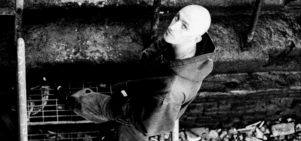It's all about the desire: Cornerhouse does Double Indemnity
Adam ScovellBilly Wilder’s classic film noir provides inspiration for an immersive, psychoanalytic group exhibition from Jenny Holzer, Sophie Calle, Ming Wong and more.
Taking a 1940s film noir and turning it into an exhibition is an interesting proposition, and one that Cornerhouse tackles as Double Indemnity opens this weekend. The Manchester Weekender exhibition uses Billy Wilder’s 1944 film as a way to explore themes of desire and possession. But curating an art show around a fictional world isn’t anywhere near as simple as it seems. The themes of Double Indemnity are inescapably real world; more real world than most Hollywood cinema at the time, or in fact, today.
To many, Wilder’s film is the epitome of film noir, showcasing the genre’s traits almost to the point of open farce. The desperate low-flier out for quick money, the femme fetal whose individualism is an excuse for personal gain and the criminal plans are all here; making it an excellent starting point for a noir-themed exhibition. Often regarded as over-stylised pulp, the film noir aesthetic seems to be a never-ending source of inspiration for artists across all mediums. Its shadows, its fashion and even its dialogue remain relevant; it is only the romanticised vision of Hollywood’s golden age that seems to date.
Materialism and greed make for rich artistic themes
Many of the artists featured in Double Indemnity use noir as a visul starting point to discuss other ideas. Ming Wong provided the 2012 Liverpool Biennial with one the strongest collection of works in the form of Making Chinatown; an exhibition examining race and stereotype through the use of film noir. His piece for the Cornerhouse exhibition, “After Chinatown” is based on the 1974 Roman Polanski film, Chinatown. Despite the distance from the perceived canon of film noir (supposedly ending in 1958 with Orson Welles’ Touch of Evil), Wong’s work uses the themes in Double Indemnity to discuss the casual Orientalism found within a number of noir films and western culture itself.
The exhibition also looks beyond the aesthetics of Double Indemnity and into the characters themselves. Acts of materialism and greed are rife within film noir and make for rich artistic themes. Anicka Yi’s piece evokes Barbara Stanwyck’s emotionally morphing housewife with a bottle of perfume, while Sophie Calle’s investigative-themed work reflects insurance reps digging up dirt on their clients.
In exposing a cut-throat world born out of the desperation for money, Wilder was instrumental in defining film noir. Cornerhouse’s Double Indemnity exhibition reflects this, exploring the unapologetically dark themes of film noir itself in a contemporary setting. Cornerhouse, 70 Oxford Street, M1 5NH, 12pm-8pm Tue-Sat, 12pm-6pm Sun, all weekend (14 Sep-5 Jan 2014), free.



















